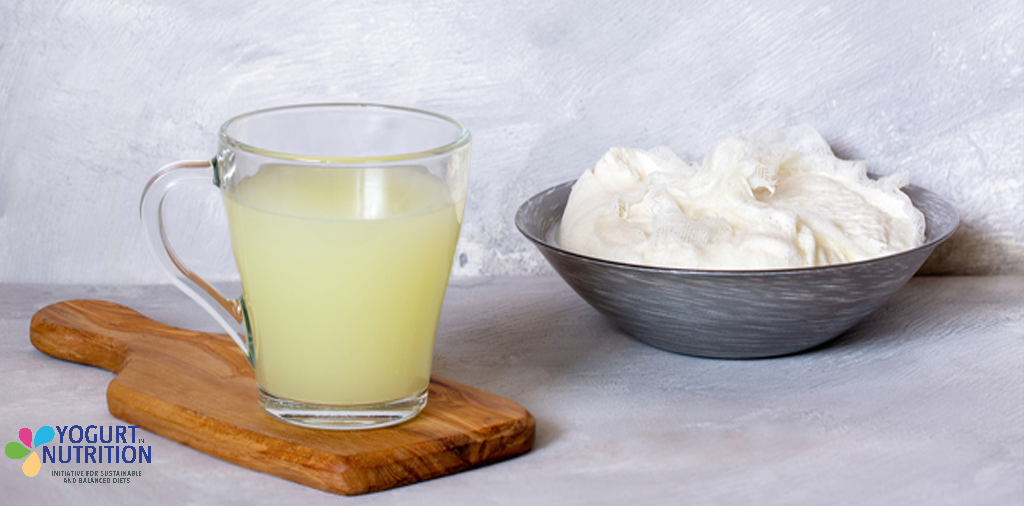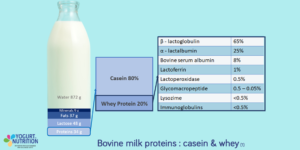When we talk about whey, people often tend to think of proteins powder for athletes. But where does it come from? The whey or lactoserum is one of the natural components of milk. You can find it, for example, in the small fraction of liquid on top of yogurt.
It is composed mainly of water but also contains proteins, minerals and vitamins. Often thrown away for individual preference, it nevertheless brings additional nutrients and a creamy consistency to yogurt. Once considered a by-product of cheese production, recent decades have witnessed an increased interest in whey due to its nutritional properties?
Milk, casein and whey proteins
Whey is the milk serum that is separated from the milk during cheese making process: Whey is formed after casein curd formation. It is also the liquid you can find on top of your yogurt.
Whey or lactoserum is mainly composed of:
- Water (93%),
- Soluble proteins,
- Vitamins, mainly from B group,
- Minerals (calcium, potassium) (1)
On average, cowmilk contains 3,2g/100 ml of proteins, divided into two main categories of proteins:
- 80 % of casein
- 20 % of whey protein (WP), which regroups various soluble proteins: β-lactoglobulin, α-lactalbumin, bovine serum albumin (BSA), and a small amount of lactoferrin to name a few.
However, the composition varies between species. For example, breastmilk contains more Whey Protein (WP) than casein (60 % and 40 %, respectively) (2) while bovine milk has a higher ratio of casein (80% and 20%) (1).
Why we should not ditch the liquid on top of your yogurt
Unlike casein, WP does not coagulate in the stomach and the components can rapidly be digested, releasing amino acids. Thus, the absorption of digested WP components is faster than that of casein.
Studies have shown some benefits of those digested proteins:
- Due to its physical and chemical properties, WP is more effective in inducing satiety than other dietary protein sources it has been compared with (1).
- WP is more easily digested and absorbed than slower digested protein such as casein.
- It also has a higher content of Branched Chain Amino Acids (BCAAs): leucine, valine and isoleucine, essential amino acids that cannot be synthesized by the body and must therefore be supplied by the diet. (3)
- Studies also suggest a positive effect of WP in the prevention or control of obesity-related type-II diabetes, hypertension and anti-inflammatory effects (1).
Dairy and dairy products are a common component of many diets. The consumption of milk, fermented milk, like yogurt or kefir have shown to have many effects of health. (4)
To add on, yogurt, fresh cheese or cottage cheese may have this fine residual liquid part on their surface, which is a source of whey. Therefore, it is recommended to shake the container instead of throwing away this precious liquid, or to stir the whole thing.




